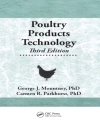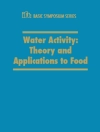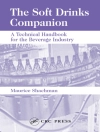This book compiles the latest research, development, and application of VRF systems with contributions from various experts who pioneered and contributed to the development of the VRF system. This book presents the fundamental issues related to the real application and behaviour of the VRF system based on the long-term monitoring of the installed system. With our experience of pandemic which COVID-19 is an airborne, the spread of the virus is very fast. With this, the heating, ventilating and air-conditioning (HVAC) system is a major player in the maintenance and control of indoor environment to minimize the spread of the virus. As the variable refrigerant flow (VRF) system is a versatile HVAC system in which it can operate at different conditions, the application of the VRF system is very important to control the indoor environmental conditions. Thus, the publication of this book is important with the present situation and the future possible situation which the control of indoor spaces is very important. With this, this book will serve as a reference for building designer, contractors, building regulators and students.
表中的内容
1. Trends in Variable Refrigerant Flow (VRF) Systems.- 2. Evaluation of Ignition hazard of alternative refrigerant for VRF system.- 3. Flow boiling heat transfer of low GWP refrigerants with the entrancement of lubricating oil.- 4. Analysis of Air Side Cooling and Dehumidification Performance in Evaporator in Direct Expansion (DX) Variable Refrigerant Flow (VRF) Air Conditioning (A/C) System Aiding to the Optimum Design Of Evaporator.- 5. The Recent Solutions for Enhancing Energy-Saving Potential of VRF Technologies.- 6. Energy Efficient Variable Refrigerant Flow Systems for Modern Buildings.- 7. Behaviour and Performance Evaluation of VRF System Under Controlled Environment.- 8. Air Enthalpy Method for Calculation of Thermal Capacity of Installed VRF System.- 9. Field Test and Evaluation of Variable Refrigerant Flow (VRF) System.- 10. Variable Refrigerant Flow (VRF) System Field Test and Data Analysis Methodologies.
关于作者
Napoleon ENTERIA is a professor of mechanical engineering at Mindanao State University, Iligan Institute of Technology, Philippines. He was a research specialist at the Building Research Institute at Japan’s National Research and Development Agency, a research staff member at Tohoku University, and a scientist at the Solar Energy Research Institute of Singapore, National University of Singapore. He is a founder of the Enteria Grün Energietechnik, a firm focusing on research and technology consulting for tropical climates. His scientific and technical activities in renewable energy systems, HVACR systems, and built environments have led to the production of several papers in books, journals, conferences, and technical reports. He has participated in collaborative projects with research institutes, universities, and companies across several countries on fundamental, applied, and policy research.
Takao SAWACHI is the president of the Building Research Institute (BRI). He conducted research on the lifestyles of residents and energy consumption. He also engages in research activities on natural and mechanical ventilation to maintain indoor air quality. He was involved in the Japanese Building Energy Codes, as he conducted research on the real energy efficiency of equipment for space conditioning, domestic hot water, lighting, and so on, mainly through full-scale experiments covering residential and non-residential systems. He has been engaged in developing online programs to calculate energy consumption for purposes other than home and office appliances. The programs he has developed are currently being used in many Japanese national policies to evaluate the energy performance of buildings. Variable refrigerant flow (VRF) systems are one of the systems whose actual energy performance is being evaluated.
Kiyoshi SAITO is a professor at the Department of Applied Mechanics and Aerospace Engineering anda dean of Sustainable Energy and Environmental Society Open Innovation Research Organization, Waseda University, Japan. He is the president of the Japan Air-Conditioning and Refrigeration Testing Laboratory and is the vice president of the E2 Division of the International Institute of Refrigeration. He has almost 30 years of research experience and has investigated all types of heat pump systems, including compression, absorption, and adsorption. His research interests include system dynamics, heat transfer performance, heat pump system optimization, artificial intelligence, and the internet of things. He has developed actual systems and simulators, such as a heat transformer type steam generator, a hybrid type liquid desiccant humidity control system, a heat pump dynamic simulator, and an LCCP simulator.












